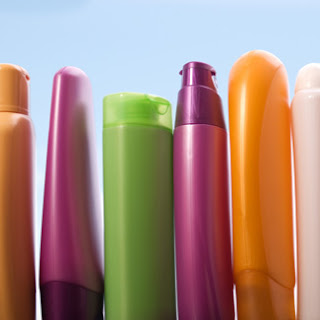I've worked in salons as either an assistant or apprentice for 2 years, so I know a lot about shampoo. I myself, even with the training I had find it hard to navigate my way around super market brand hair care ranges. It's not always easy to afford or justify expensive salon only brands but that doesn't mean you should miss out on having a system tailored to your own needs. This is a blog I wrote months ago, but I think it's important that everyone has this knowledge. As, you'll read later on if you have any questions about products and general hair care feel free to drop me an email, you'll find that on the 'contact me' page.
First off, and I can't stress this enough, KNOW YOUR HAIR, turn the lights down, put on some smooth jazz, pour a glass of wine for the two of you and talk about your days - well maybe not that but at least find out the natural texture - is it wavy, straight or like me, do you have a white girl afro? Figure out what it is that you don't like about your hair right now - is it greasy, dry, brittle? You can buy all the products in the world but if it's not right for you it just won't work.
What else does your hair need? Do you need to tame your curls or do you want to bring them out? Do you need a toning shampoo or one with colour pigments to help boost colour? Do you have dry hair that needs deep moisturizing? This I really think is the next step after knowing your hair type, it's important to specify and narrow it done as much as possible, after all this is about making it easier for you.
An even better way to break this down is to DIAGNOSE EACH PART OF YOUR HAIR, this is something I learned at a training night as an apprentice and it was so helpful. Break your hair into three sections, mentally of course, roots, mid-lengths and ends, and then assign a diagnosis to each and you'll easily be able to find a product to match.
SHAMPOO - ROOTS/SCALP: Any kind of scalp irritations, dandruff, issues with excess oil should be dealt with at the scalp - makes sense doesn't it? My hair, for example, tends to produce a little too much oil at the roots and can get weighed down from it, so I could use a CLARIFYING shampoo. I've previously used a product by Wella in their Biotouch range called Pure Aqua Essence, they also have a leave in conditioner that's great. This product would also suit people with active outdoor lifestyles, work out regularly - pretty much anyone who'll sweat. It can be drying to the rest of the hair and would potentially strip colour so I would give this one a miss if you have coloured hair.
CONDITIONER - MID-LENGTHS/ENDS: We use conditioner to seal up our cuticles after shampooing, this is why we get that smooth feeling and appearance afterward. Definitely a step not to skip! If you have dry, heat damaged hair a fortifying and deep moisturizing conditioner would probably suit you. Despite my mane being a bit slick at the roots it gets much dryer in this section, so I would use a product designed for the aforementioned symptoms.
TREATMENT - MID-LENGTHS/ENDS: Whilst this step is purely optional, a lot of people believe they don't have time for this step, I do recommend people - especially with longer hair or people who style their hair with hot tools, to do some kind of treatment or mask once a week. This follows much the same outline as a conditioner - focus on the problems in your mid-lengths to ends and find the corresponding solution. Also, I go through periods where my ends get extra dry and I find putting an amount slightly larger than a pea concentrating only on my ends, where most of my damage and dryness does help smooth it out and reduce some of the damage - though the permanent solution for this would be regular trips to the hairdresser.
I know there can be a lot of confusion with treatments especially since there are so many on the market right now all promising to do AMAZING things. If you're not a fan of trial and error I have a theory that might help you make your decision next time, last year I attended another training night for a range called PPS, the demonstrator there said something which I found interesting, that your hair is one of two things - hungry or thirsty, and by that it means your hair either needs protein or moisture. If your hair is dry and frizzy you better pour that thing a big glass of water - STAT! but if it's just damaged or lacking it's usual luster perhaps you should take it out to a nice meal? Metaphorically of course.
Being able to diagnose your hair is a major advantage and it's something that everyone needs to know to not only save money but spare themselves the frustration of feeling like nothing works for their hair, hence the long blog. If you have any questions or need any help diagnosing your hair feel free to leave me a message.




























